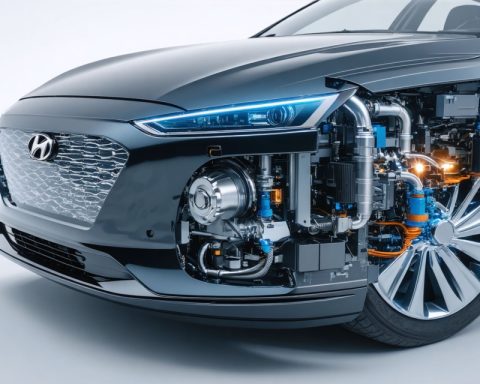- The F-22 Raptor emerged as the pinnacle of military aviation, designed to counter Cold War threats like the MiG-29 and Su-27.
- Initially planned as a fleet of 750, only 187 F-22s were produced due to high production costs and shifting priorities.
- The aircraft, with its advanced stealth capabilities, faced financial hurdles, making it one of the most expensive military jets at $150 million each.
- The end of the Cold War shifted focus from air dominance to more versatile solutions, paving the way for the F-35 Lightning II.
- The F-35 offers multirole capabilities, combining advanced stealth with affordability, addressing broader military needs.
- The Next Generation Air Dominance (NGAD) program hints at the F-22’s eventual replacement, emphasizing AI and unmanned flight.
- The F-22’s legacy reflects both its engineering triumphs and the strategic challenges it faced with changing military doctrines.
Above the horizon, the F-22 Raptor once roared as the apex predator of the skies, a masterpiece of military engineering unrivaled in its time. Born from the 1981 Advanced Tactical Fighter program, it grew from the USAF’s ambition to counter Cold War adversaries like the MiG-29 and the Su-27. Yet now, the Raptor finds itself overshadowed by budget storms and fresh contenders.
Originally envisioned as a vast fleet of 750, a mere 187 F-22s took flight before production halted. Each Raptor embodies cutting-edge stealth, but the $150 million price tag meant a storm of cost overruns and fiscal doubts, leaving it as one of the priciest aircraft to glide above us. As the geopolitical skies changed, so too did priorities. The end of the Cold War shifted focus to asymmetric threats, leaving little room for the Raptor’s air dominance niche.
Enter the F-35 Lightning II—a versatile, multirole thunderbolt that blends advanced stealth with affordability. The F-35 maneuvers through political and economic landscapes with agility, offering something the F-22 could not: broad utility at reduced costs.
The Next Generation Air Dominance (NGAD) program now hovers on the horizon, casting shadows of doubt over the Raptor’s future. Scheduled as a stopgap until 2030, the F-22’s role diminishes as the USAF eyes future skies with NGAD’s promises of AI and unmanned flight.
As the Raptor navigates these turbulent skies, we see a poignant paradox. Once indomitable, it now faces a new frontier where its true rivals weren’t foreign adversaries but budget lines and evolving military doctrines. The F-22’s legacy may well be remembered as much for its triumphs as for the programmatic headwinds it faced.
Is the F-22 Raptor Really Out of Time? What Lies Ahead for the Iconic Fighter Jet
Features, Specs & Pricing
The F-22 Raptor remains a towering achievement in aviation technology. Designed for air superiority, it combines stealth, supercruise, and advanced avionics. Here are some of its key features:
– Stealth Capabilities: Advanced composite materials and an aerodynamic design make it difficult to detect by radar.
– Speed and Agility: It can achieve speeds up to Mach 2.25, with a powerful Pratt & Whitney F119-PW-100 engine that allows it to supercruise at Mach 1.82 without afterburners.
– Avionics: The fusion of radar, sensors, and secure communication systems allows pilots to track multiple targets.
– Pricing: Originally costing $150 million per unit, the high operational and maintenance costs further contributed to its limited production.
How-To Steps & Life Hacks: Maintaining an F-22
Maintaining such sophisticated technology requires a dedicated workforce and expert knowledge:
1. Routine Checks: Regularly scheduled maintenance includes inspections and software updates.
2. Engine Care: The Pratt & Whitney engines demand regular checks for performance and efficiency.
3. Software Upgrades: Keeping avionics systems updated with the latest firmware is crucial for operational readiness.
4. Stealth Maintenance: Regular checks on the stealth coating are vital for preserving the aircraft’s low observability.
Real-World Use Cases
The F-22 has been deployed in various missions, reflecting its role beyond addressing Cold War threats:
– Air Superiority Missions: Designed to dominate in aerial combat, it has been used to patrol foreign airspace and maintain peace.
– Global Deterrence: Though rarely utilized in conflict, the mere presence of the F-22 can deter opposing forces.
Market Forecasts & Industry Trends
As the defense sector evolves, budget allocations are shifting towards more versatile platforms like the F-35 and future programs:
– F-35 Ascendancy: Offers a balance between performance and cost, filling diverse roles across services.
– NGAD Program: Promises future air dominance with AI and possibly unmanned platforms, aiming for deployment by 2030.
– Emerging Competition: Nations like China and Russia are developing their own stealth fighters, potentially shaping future procurement decisions.
Reviews & Comparisons: F-22 vs. F-35
– F-22 Strengths: Superior in air superiority and stealth.
– F-35 Versatility: More cost-effective with multi-role capabilities.
– Operational Cost: F-22 is more expensive to maintain due to its advanced features.
Controversies & Limitations
Despite its prowess, the F-22 faces challenges beyond its initial scope:
– Budget Overruns: Original plans faced significant overruns, leading to cutbacks in production numbers.
– Evolving Threat Landscape: With changing military priorities, its specific air dominance role has been questioned.
Security & Sustainability
– Cybersecurity: The F-22’s sophisticated systems require robust security to combat cyber threats.
– Environmental Impact: Efforts are ongoing to reduce the environmental footprint of maintenance operations.
Insights & Predictions
While the F-22 will continue to be an air superiority staple, its future is intertwined with innovative defense programs that address new threats:
– NGAD Vision: Promise of integrating AI and potentially unmanned elements for adaptable air dominance.
– Potential Upgrades: Software improvements could extend its service life even as NGAD emerges.
Pros & Cons Overview
Pros:
– Unmatched stealth and aerial dominance
– Advanced electronic warfare capabilities
– Highly agile in combat scenarios
Cons:
– High acquisition and maintenance costs
– Limited production and exclusivity
– Obsolescence concerns due to newer technologies
Actionable Recommendations
– Utilize for Unique Missions: Employ the F-22 in roles where its capabilities provide the greatest advantage.
– Invest in Upgrades: Regular software upgrades can enhance its longevity and maintain relevance.
– Prepare for NGAD Integration: Start transitioning strategies to incorporate future technologies.
For further information on defense technology and next-gen aircraft, visit Lockheed Martin and Boeing.
The F-22 Raptor narrative serves as a valuable lesson in military procurement, where technological triumphs intersect with fiscal and strategic realities. While the horizon changes, the legacy of the Raptor will remain a foundation for future advancements.







